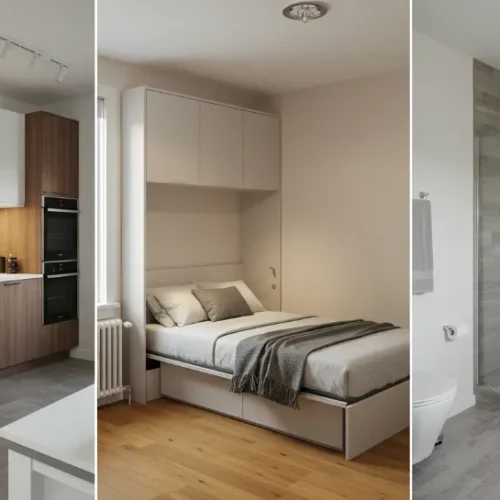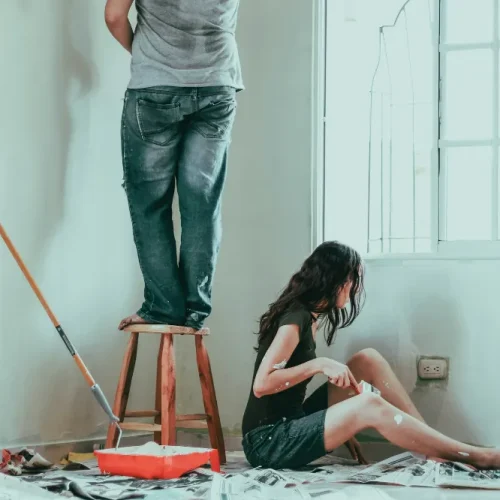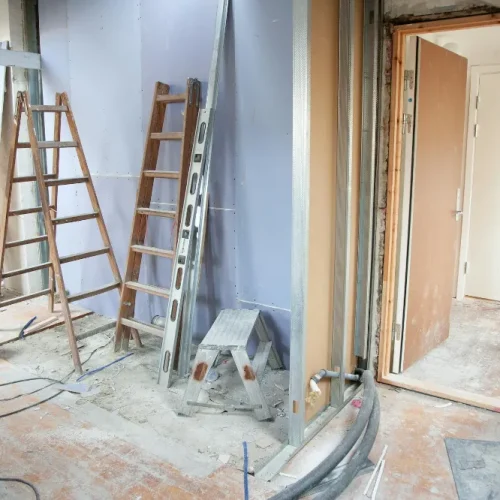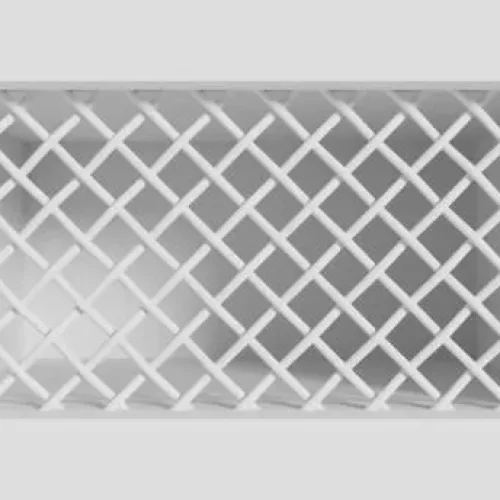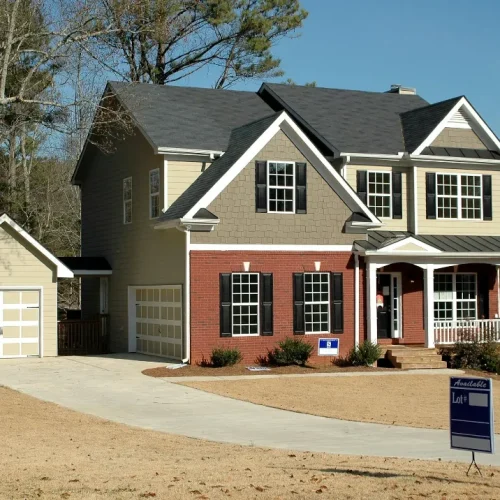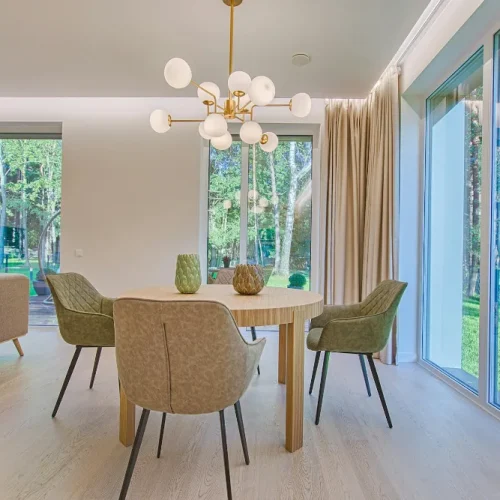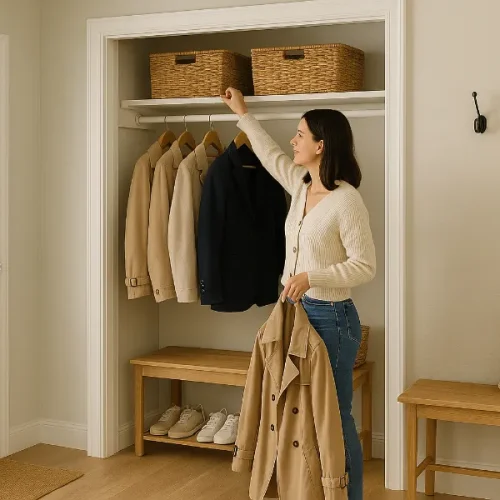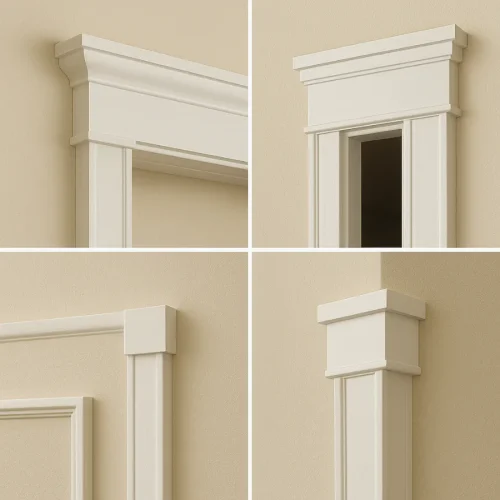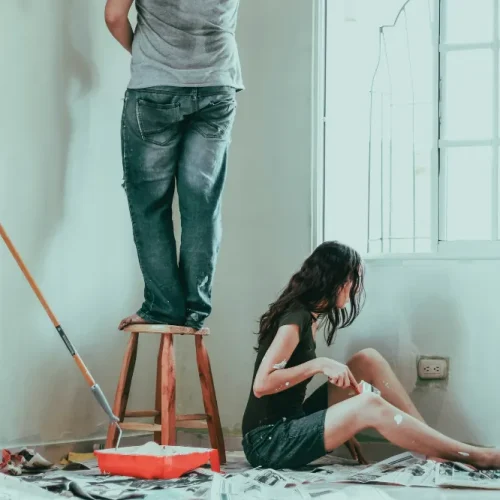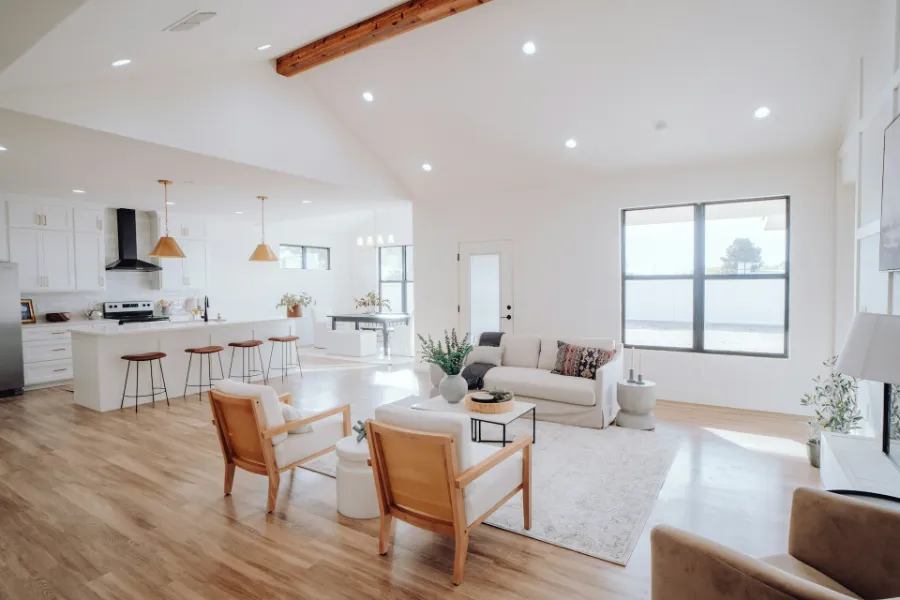
People love builder grade homes for a variety of reasons, mainly because they’re affordable and made with low-maintenance materials. But while they have their fair share of advantages, they also come with some drawbacks. The biggest downside is that you don’t get to choose the design or any of the features that go into it. They’re all built from a standard plan, so there isn’t much character, and they can end up looking a bit generic. If you’re living in one of these cookie-cutter homes and want to make it feel more custom, here are a few ways to do it.
Break Up the Beige Walls
Let’s start with the walls. You’ve probably heard the term “builder’s beige” used for that dull, flat paint that can make a room feel lifeless. Most builder grade homes stick to neutral colors like white, gray, or beige, often in a flat finish that hides imperfections but doesn’t add much personality. While those choices are meant to help buyers imagine their own style, they often just make the space feel unfinished.
So, give your home a custom feel by refreshing the walls. Pick a paint color that fits the mood you want in the room, or try some wallpaper for extra visual interest. If you’re not ready for a huge change, a single accent wall is enough to bring in some charm and make it look less monotonous.
Upgrade the Cabinets
Next, take a look at the cabinetry. These also tend to be basic neutral tones, which can feel unoriginal and are often harder to keep clean. Painting kitchen or bathroom cabinets is one of the most impactful and affordable home renovations you can do, especially when paired with new hardware.
When choosing paint, a semi-gloss finish works well because it’s easier to clean and holds up better in moisture-prone areas. Swapping out basic chrome knobs for something with a bit more character (like matte black, brushed brass, or vintage-style pulls) can instantly make a plain vanity or cabinet feel like it belongs in a custom build.
Swap Out the Lighting
Now, onto the lighting. Builder grade flush mounts, basic pendants, and brushed nickel vanity lights are practical but pretty bland. Replacing them with fixtures that match your style can totally change the tone of a room. Maybe you prefer warm bulbs, statement pendants, or matte finishes. Adding dimmers or layered lighting like sconces and under-cabinet lights also makes the space feel more custom and cozier.
If your home still has standard lighting in most rooms, replacing several fixtures at once often saves time. And if you’re tackling multiple rooms, renting a dumpster from a company like Waste Removal USA can keep all the packaging, broken materials, and junk fixtures from piling up.
Add Some Architectural Touches
Lastly, think about the architectural details. Swapping plastic switch plates for metal or wood, adding picture frame or board-and-batten molding, or wrapping ceiling beams in stained oak can all make a space feel more intentional and less generic.
Even little things like changing out baseboards, adding window trim, or installing a ceiling medallion under a light fixture can create a more finished, custom look. The trick is to pick one or two of these upgrades and carry them through a few rooms so they feel like part of the original design, not just one-off add-ons.
Why Builder Grade Matters More Than You Think
When people hear the term builder grade, they often assume it just means “basic” — and that’s not entirely wrong. But understanding what builder grade really means can help you make smarter decisions as a homeowner. These materials and fixtures are selected for mass production and cost-effectiveness, which often leads to compromises in style, durability, and individuality.
Why does that matter? Because over time, those choices can impact not just how your home looks, but how it functions and even how it ages. A builder grade home is like a blank canvas, and recognizing where the shortcuts are gives you the power to add lasting value and tailor your space to your lifestyle.
How Small Changes to Builder Grade Homes Make a Big Impact
You don’t have to gut your home to give it personality. In fact, the beauty of upgrading a builder grade home is that even small changes go a long way. Whether it’s swapping out factory-grade door handles, updating a basic bathroom mirror, or replacing synthetic blinds with woven wood shades — these little upgrades layer in custom touches that immediately shift the feel of a space.
And it’s not just about looks. A more functional kitchen faucet, higher quality lightbulbs, or even replacing hollow-core doors can improve everyday life in ways you didn’t realize were possible until you made the switch.
The Long-Term Benefits of Upgrading Builder Grade Features
Investing in upgrades doesn’t just make your home prettier — it can actually improve its performance and resale value. Builder grade finishes often wear down faster, especially in high-traffic areas like kitchens and bathrooms. By replacing those parts with better materials and personalized design, you’re extending the life of your space while adding features buyers look for.
From energy-efficient lighting to custom closet systems, these upgrades pay off over time. Plus, a home that looks and feels customized stands out in any market. That means when it’s time to sell, your home isn’t just another cookie-cutter listing — it’s the one buyers remember.
Conclusion
While you’re personalizing your home, remember not everything has to be redone to make it feel high-end. Builder grade homes often feel impersonal because nothing stands out, so just add enough contrast and detail to make it feel like someone actually lives there and cares about it. That’s what really gives a home warmth and character.
FAQs
A builder grade home is constructed using cost-effective, mass-produced materials and fixtures. These choices are designed to keep prices low and appeal to a wide range of buyers.
Because they’re built using standard designs and finishes, there’s little room for personalization. This often results in homes that lack distinctive character or warmth.
Simple changes like painting walls, upgrading lighting, replacing hardware, and adding trim or molding can instantly personalize your space and elevate its look.
Start with the walls or cabinets. These are high-impact areas that are easy to transform with a fresh coat of paint or new hardware.
Yes! Even minor updates like switching out light fixtures or cabinet pulls can significantly change the feel of a room and make it look more custom.
Absolutely. Higher-quality upgrades often last longer, are easier to clean, and can make daily living more comfortable and efficient.
Yes, thoughtful upgrades can enhance both aesthetic appeal and resale value. Customized homes tend to attract more buyers and stand out in competitive markets.

